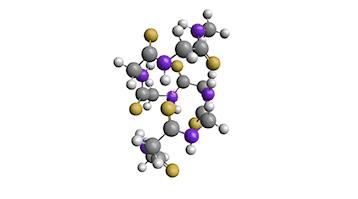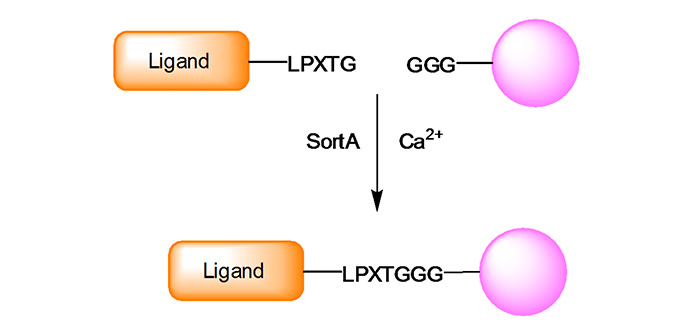Welcome to Iris Biotech
For better service please confirm your country and language we detected.

For better service please confirm your country and language we detected.

Thank you very much for your interest in our products. All prices listed on our website are ex-works, Germany, and may attract customs duties when imported.
You may/will be contacted by the shipping company for additional documentation that may be required by the US Customs for clearance.
We offer you the convenience of buying through a local partner, Peptide Solutions LLC who can import the shipment as well as prepay the customs duties and brokerage on your behalf and provide the convenience of a domestic sale.
Continue to Iris Biotech GmbHSend request to US distributorPublished on 12/08/2015

a) BioConjugation through enzyme (sortase) based linking technology:

A new and interesting application of oligo-Gly is its use in Sortase linking technology, where oligo-Gly binds as free N- Terminus to the recognition motif (LPXTG) of the C-terminus of a protein of interest. The transpeptidase activity of sortase is used by structural biologists to produce fusion proteins in vitro. In the presence of sortase, the two peptides are covalently linked through a native peptide bond.
b) Linker through Click reaction or chemical amid bond formation:
The azide function is widely used for coupling to alkyne-containing fragments via the renowned Click reaction.
Besides that, oligo-Gly has been used as linker to combine different subunits of dimeric or oligomeric proteins or to create artificial multi-domain proteins. By modification into Gly-Gly-Gly-Ser motifs, high solubility can be achieved. Most of the linkers are rigid and function to prohibit unwanted interactions between the discrete domains. However, Gly-rich linkers are flexible, connecting various domains in a single protein without interfering with the function of each domain. The flexibility of oligo-Gly is much higher than for any other amino acid combination due to large areas of allowed Phi/Psi-angle combinations in the Ramachandran plot. This enables formation of unusual structure elements like turns, breaks of helices and sheets and many others.
Oligo-Gly designed in a star-like fashion, so-called tri- and tetraantennary molecules, were found to form highly ordered supramers in aqueous medium.
Polyglycine fragments containing up to 7 glycines are reported to bind to surfaces and have potential application in nanotechnology constructs: Gly7-NHCH2-fragment containing peptides bind on mica surface in aqueous solution. Furthermore, oligo-glycine has been used as a flexible linker between DNA binding domains. A variation of glycine and alanine containing linkers were used in libraries of single-chain Arc repressor in order to tune flexibility and stability.
Proteins and DNA have been proven usefully being fused by Gly-rich linkers.
Polyglycine units - as natural peptide type linkers - were employed to connect the original N- and C- termini of a circularly permuted constructs of Escherichia coli dihydrofolate reductase (DHFR).
Referenzen